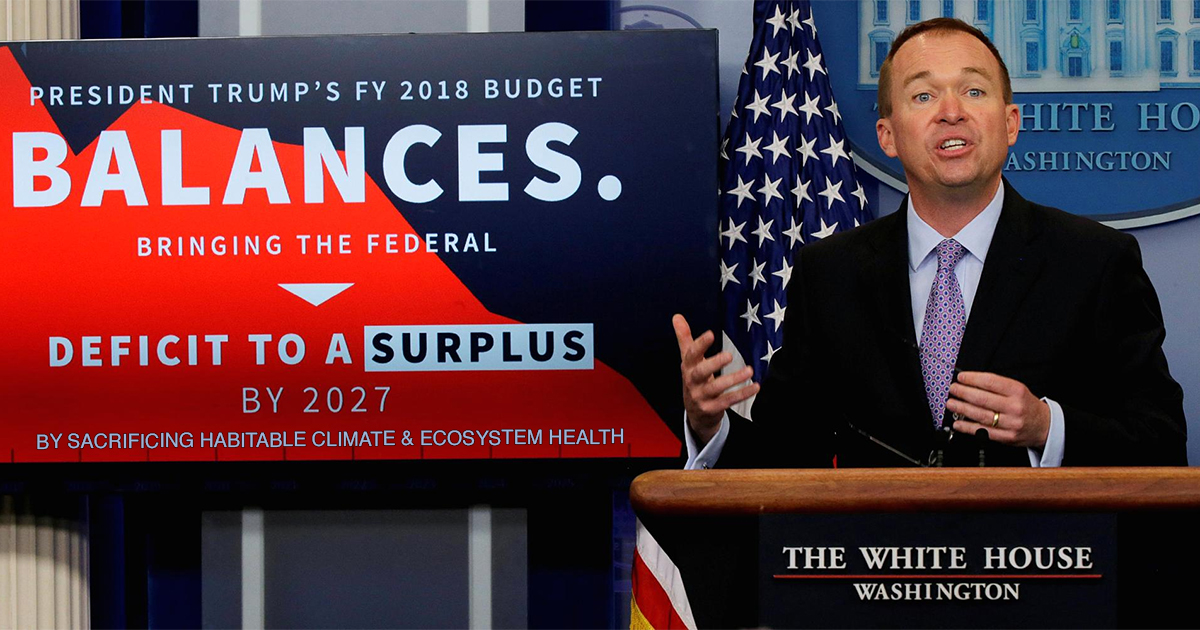
Balancing Budget by Trashing Planet More Than Bad Guesswork
Columnist Robert J. Samuelson has made the Wall of Shame here before, so I’m glad to confer Wall of Fame status today. I must admit it’s not richly deserved, but this is a start:
Trump’s Great Growth Debate is All About Guesswork
It’s great to see Samuelson ask some of the right questions in his syndicated column:
“The argument between the Trump administration and its critics over a sustainable rate of economic growth raises profound questions about America’s future. Have we entered a prolonged period of slow growth? If so, how does that alter society and politics? Or will the ‘right’ policies raise growth to past levels?”
Here’s the background:
“In its budget, the White House projected annual inflation-adjusted economic growth of 3 percent over the next decade. This almost equals the average rate of 3.2 percent since 1950. Meanwhile, the Congressional Budget Office and many private economists project an annual growth rate of about 2 percent, or roughly what it has been since 2010.”
“Jason Furman, head of the Council of Economic Advisers under President Barack Obama…estimates the chances of reaching 3 percent growth at about 1 in 25.”
Samuelson documents nicely why policymakers gravitate to the fairy tale of endless economic growth. Otherwise the work of balancing government budgets is just too hard.
“Economist Simon Johnson of the Massachusetts Institute of Technology argues that adopting the faster growth rate is intended to justify tax cuts. ‘If administration officials acknowledge that a 3% annual rate is not feasible,’ he writes, ‘they would need to face the reality that their forecasts for tax revenues are too high, and that their proposed tax cuts…would dramatically increase the budget deficit and the national debt.”
Samuelson also correctly identifies a few of the reasons we cannot expect 3% or greater economic growth over the coming years. Productivity and workforce growth are both slowing. I like the acknowledgement, though nowhere do I see Samuelson embracing the idea of ending economic growth in an effort to move toward sustainability, and to stem increased ravaging of our climate. If you’re new here, and don’t yet understand that perpetual economic growth is not in our best interest, start here in your research to get up to speed.
Samuelson needs to get up to speed, too. There are some disappointing statements here:
“Trump’s economic assumptions are optimistic and self-serving. But they are not impossible.”
I suppose they are optimistic from the U.S. President’s self-interested perspective, but if achieved they would help to create a very dark future. That’s something Samuelson doesn’t get. He’s still a disciple of the church of growth everlasting. But, even though he longs for higher rates of growth, Samuelson ends with this fairly accurate assessment:
“We can no longer grow our way out of serious conflicts, if we ever could. There isn’t enough money to satisfy all our demands, even at higher rates of economic growth. There will be conflicts between private and governmental spending; between national and local spending; between health and non-health spending; and between spending on the old versus spending on the young. The present is contentious; the future may be worse.”
Photo from a CNBC story about this same topic. I added my own editorial comment to the bottom of the budget director’s graphic.
Tags: economic growth, economy, gdp, gdp growth, limits to growth
Trackback from your site.